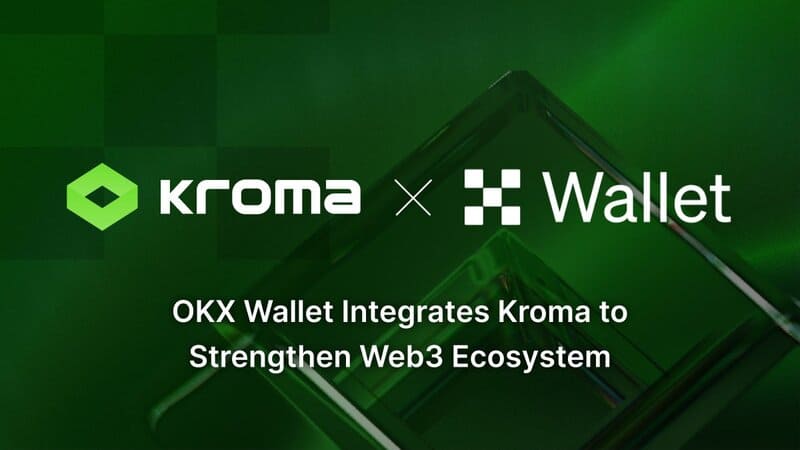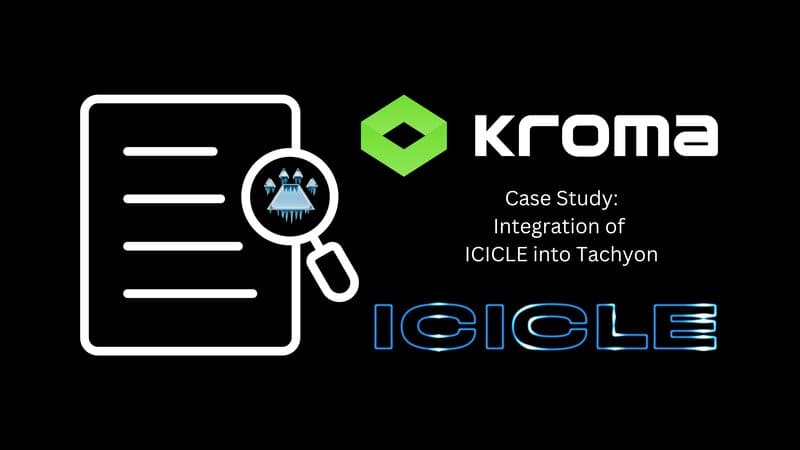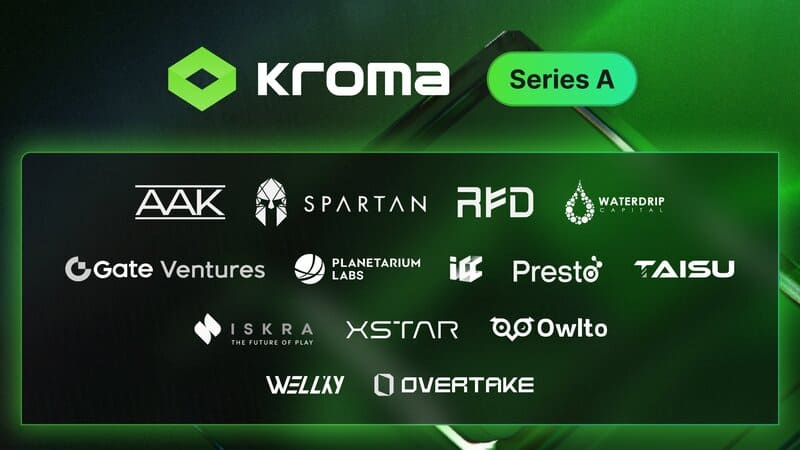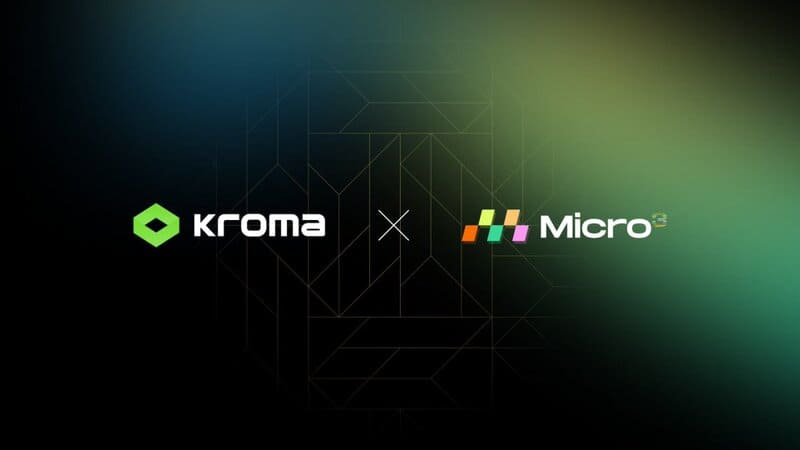This article will dive deep into what is Kroma, covering its key features, how it works, and why it’s a game-changer for Ethereum scaling. We will explore its technical aspects, use cases, and future roadmap. If you want a comprehensive understanding of Kroma and its potential, be sure to read the entire article!
What is Kroma?
Kroma is a Layer-2 scaling solution for Ethereum. It uses optimistic rollups to improve transaction speed and reduce costs while maintaining compatibility with Ethereum’s Ethereum Virtual Machine (EVM). This allows developers to easily move decentralized applications (dApps) from Ethereum’s mainnet to Kroma without changing much of the code. Kroma aims to solve the scalability issues that Ethereum faces by processing transactions off-chain and then batching them back to Ethereum’s Layer-1 for finality. This design enables faster transaction speeds and lower gas fees without sacrificing security.

How does Kroma work?
Kroma operates on an optimistic rollup model. Optimistic rollups assume transactions are valid and only run fraud proofs if there is a dispute. This approach is more efficient than traditional methods because it doesn’t require every transaction to be verified individually on Ethereum Layer-1. Instead, Kroma batches transactions together and submits a compressed form to Ethereum.
This compression reduces the cost of using the Ethereum network because fewer data are uploaded to the blockchain. Users still benefit from Ethereum’s security guarantees, while enjoying faster transaction processing and cheaper fees on Kroma.
Scalability and rollup technology
Kroma uses Optimistic Rollups to scale. This means it processes transactions on Layer-2 before bundling them together and submitting them back to Ethereum’s Layer-1. The result is improved transaction throughput, making Kroma much faster than Ethereum Layer-1. It can handle more transactions per second (TPS) by taking advantage of this off-chain processing model.
Finality and EVM equivalence
Kroma maintains EVM equivalence, which means that any smart contract that runs on Ethereum can also run on Kroma without modification. Developers don’t need to rewrite their dApps, making it easier to adopt Kroma’s solution. Finality, the point at which transactions are permanently recorded, is also faster on Kroma. This ensures that users can trust that their transactions are secure and settled quickly.
Transaction speed & Gas Fees
By processing transactions off-chain and bundling them before submitting to Ethereum, Kroma significantly reduces gas fees. While Ethereum mainnet fees can spike during periods of high demand, Kroma remains more cost-effective. This means users can transact without worrying about paying exorbitant fees for simple actions like transferring tokens or minting NFTs. Transaction speeds are also much faster since they don’t rely on Ethereum’s slower block times.
Security Features
Kroma leverages Ethereum’s Layer-1 security by submitting fraud proofs. If someone attempts to submit an invalid transaction batch, it can be challenged through a fraud proof process. This ensures that the security of Kroma transactions is as robust as Ethereum’s, even though they are processed off-chain.

Key features of Kroma Network
EVM compatibility
One of Kroma’s key advantages is its EVM compatibility. Developers can easily port their Ethereum-based dApps to Kroma without needing to modify their code. This makes adoption of Kroma fast and simple for teams already working within the Ethereum ecosystem. Because Kroma is EVM-equivalent, dApps work exactly the same on both platforms, providing a seamless transition.
Low gas fees
Kroma’s rollup technology dramatically lowers gas fees compared to Ethereum Layer-1. Instead of paying for every transaction to be processed on-chain, users only pay for the batch of transactions, reducing costs. For users who transact frequently, especially in decentralized finance (DeFi) or gaming, these savings can be substantial.
High throughput
By taking advantage of rollup technology, Kroma can process significantly more transactions per second than Ethereum Layer-1. This increased throughput makes it possible to handle high-traffic applications, such as games or decentralized exchanges (DEXs), without the delays or high costs associated with Ethereum mainnet.
Security and decentralization
Kroma retains Ethereum’s decentralized security model by relying on its fraud-proof system. Although transactions are processed off-chain, any fraudulent activity can be detected and reversed through the fraud proof mechanism. This ensures that the security of Kroma is closely aligned with Ethereum’s security guarantees.

Kroma use cases and ecosystem
DeFi applications
Kroma is ideal for decentralized finance (DeFi) applications. DeFi platforms rely heavily on fast transaction processing and low fees, both of which Kroma excels at. By reducing transaction costs and improving throughput, Kroma enables users to trade, stake, and borrow assets more efficiently.
Gaming
Blockchain gaming has long faced scalability issues on Ethereum due to high gas fees and slow transaction times. Kroma’s high throughput and low fees make it a perfect fit for games that require fast transactions, such as in-game purchases, asset trades, or battle outcomes. Developers can build complex games on Kroma without worrying about performance bottlenecks.
NFTs
Non-fungible tokens (NFTs) are another major use case for Kroma. Minting and trading NFTs can be prohibitively expensive on Ethereum due to high gas fees. Kroma’s lower fees make NFT transactions more accessible, allowing creators to mint and trade NFTs at a fraction of the cost. Kroma can handle the high volume of transactions required for NFT marketplaces without slowing down.
Enterprise applications
Enterprises looking for scalable blockchain solutions can also benefit from Kroma. Whether it’s supply chain management, identity verification, or financial services, Kroma’s scalability and security make it a strong contender for enterprise-grade applications. Kroma’s Layer-2 solution enables businesses to use blockchain without worrying about the limitations of Ethereum Layer-1.

Kroma’s roadmap and future development
Current progress
Kroma has already launched its testnet and is in the process of preparing for a full mainnet launch. This means that developers and users can start testing the network and building applications before the mainnet goes live. Kroma’s early success on testnet is a positive indicator for its future development.
Upcoming features
Kroma’s roadmap includes several exciting updates. Future features will include advanced Layer-2 optimizations to further improve scalability and reduce fees. Kroma is also planning to expand its ecosystem by partnering with other blockchain projects and integrating additional tools to support developers.
Partnerships and collaborations
Kroma is actively seeking partnerships within the blockchain community to grow its ecosystem. By collaborating with DeFi platforms, gaming developers, and enterprise applications, Kroma aims to become a go-to Layer-2 solution for various use cases. These partnerships will help Kroma expand its reach and solidify its position within the Ethereum ecosystem.
Comparison with other Layer-2 solutions
Kroma vs. Arbitrum/Optimism
When comparing Kroma to other Layer-2 solutions like Arbitrum and Optimism, Kroma stands out for its commitment to EVM equivalence and its strong focus on low gas fees. While Arbitrum and Optimism also use optimistic rollups, Kroma offers competitive fees and a simpler onboarding process for developers looking to port dApps. Additionally, Kroma’s roadmap promises further optimizations that could make it a more attractive option in the long term.
Kroma’s unique selling points
Kroma’s unique selling points include its deep integration with the Ethereum ecosystem, its focus on minimizing fees, and its commitment to maintaining EVM compatibility. For developers looking for a fast, scalable solution that works seamlessly with Ethereum, Kroma presents a compelling choice.
How to get started with Kroma
Setting up a wallet
To start using Kroma, you’ll need to set up a wallet that supports Layer-2 transactions. Many popular Ethereum wallets, such as MetaMask, can be configured to interact with Kroma by adding the network’s RPC settings.
Bridging assets
Once your wallet is set up, you can bridge assets from Ethereum Layer-1 to Kroma. This involves using a bridging dApp to transfer tokens from Ethereum mainnet to Kroma’s Layer-2. The process is straightforward and usually takes just a few minutes.
Deploying smart contracts
For developers, deploying smart contracts on Kroma is just as easy as on Ethereum. Since Kroma is EVM-compatible, you can use the same tools and development frameworks, such as Truffle or Hardhat, to deploy contracts with minimal adjustments.
Using dApps on Kroma
Kroma supports a growing number of dApps. Once your wallet is connected, you can start using dApps just like you would on Ethereum. Whether you’re trading on a DEX or minting NFTs, Kroma offers a fast and cost-effective experience.
Kroma’s tokenomics
Native token utility
Kroma has its own native token, which is used for paying transaction fees and participating in network governance. The token ensures that Kroma’s ecosystem remains decentralized and community-driven.
Staking and rewards
Kroma’s staking model allows users to lock up their tokens to help secure the network. In return, they earn rewards in the form of additional tokens. This incentivizes long-term participation in the network and helps maintain its security.
Governance
Kroma token holders can participate in governance decisions, voting on protocol upgrades and other key decisions. This ensures that the community has a say in the direction of the network’s development.
